


A Time-Honored Craft
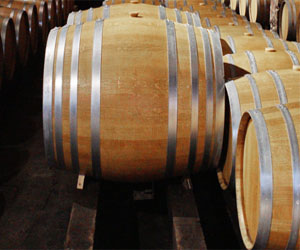
Wine making is a tradition that spans centuries, even millennia. This time-honored craft, passed down from generation to generation, reflects the marriage of art and science, and it weaves together the essence of culture, terroir, and history. In this article, we'll delve into the enduring wine making traditions that have shaped the world of winemaking.
Grapes And Terroir: The heart of any winemaking tradition is the grape. Different regions around the world have unique grape varieties that thrive in their specific terroirs. Terroir encompasses the combination of soil, climate, and geography that imparts distinct characteristics to the grapes. Winemakers who honor tradition understand that the grapes are the foundation of their craft. They meticulously select the right grape varieties for their region, embracing what the land offers.
Harvest And Vinification: The harvest season is a pivotal moment in the wine-making process. Traditionally, grapes were handpicked, a labor-intensive practice that continues in many wineries, especially those producing high-quality, artisanal wines. The timing of the harvest is a critical decision, and it often reflects a blend of modern technology and age-old knowledge passed down through generations.
Once the grapes are collected, they are processed through various methods, including crushing, destemming, and pressing. The choice of these methods, like the choice of grape variety, varies from region to region, reflecting the traditions and techniques that have been perfected over time.
Fermentation And Aging: The fermentation stage is where the magic happens. Yeasts convert the grape sugars into alcohol, and this is a stage where winemaking traditions show their depth. Some wineries still rely on wild, naturally occurring yeasts for fermentation, while others use cultivated yeasts to ensure consistency. The decision can greatly influence the wine's character.
Aging is another crucial aspect of winemaking traditions. Many winemakers use oak barrels, which can impart flavors and aromas to the wine, adding complexity and depth. The length and type of aging are often guided by tradition. For example, in Bordeaux, it's common to age red wines in oak for extended periods, while in the New World, there's often a preference for a more fruit-forward style with shorter aging.
Blending And Bottling: Blending is an art that relies on the winemaker's palate, knowledge, and adherence to tradition. Winemakers may blend different grape varieties or vintages to achieve the desired flavor profile, and this is often influenced by regional practices and local customs.
Once the wine has reached the desired quality, it is bottled, sealed, and labeled, often with labels that pay homage to the winery's history and heritage.
Passing The Torch: One of the most beautiful aspects of winemaking traditions is the passing down of knowledge and techniques from one generation to the next. The art of winemaking is often a family affair, with each generation building upon the wisdom and experience of their predecessors. This continuity ensures the preservation of traditions and the constant pursuit of excellence.
Winemaking traditions are the threads that tie the past, present, and future of the wine industry. They offer a deep connection to the land, the people, and the culture of each winemaking region. While technology and innovation have certainly influenced the world of winemaking, it is these traditions that have kept the craft alive, vibrant, and endlessly fascinating. Wine lovers around the world can raise a glass to the enduring beauty of this ancient art.
The Fusion Of Tradition And Innovation
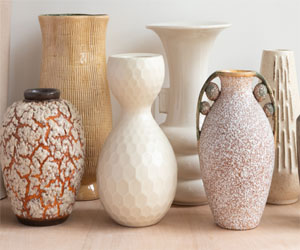 Ceramics, an art form with a history dating back millennia, has taken on new life in the contemporary art world. Contemporary ceramics represent a dynamic fusion of traditional techniques and innovative ideas, resulting in a breathtaking array of artistic expressions. This revitalized craft has garnered international attention and a dedicated following among artists and collectors.
Ceramics, an art form with a history dating back millennia, has taken on new life in the contemporary art world. Contemporary ceramics represent a dynamic fusion of traditional techniques and innovative ideas, resulting in a breathtaking array of artistic expressions. This revitalized craft has garnered international attention and a dedicated following among artists and collectors.
Breaking Boundaries: Contemporary ceramics are marked by a fearless embrace of experimentation. Artists working in this medium are unafraid to push the boundaries of traditional ceramics, often combining clay with other materials such as metals, glass, or textiles. The use of digital technology has enabled artists to design intricate patterns and precise shapes, opening up entirely new possibilities.
Diverse Styles And Themes: One of the most exciting aspects of contemporary ceramics is the diversity of styles and themes explored by artists. From minimalist and functional pottery to abstract and conceptual sculptures, contemporary ceramics encompass a wide range of artistic expressions. Some artists delve into social and political commentary, while others focus on the beauty of the natural world. This diversity reflects the vast creative potential of ceramics in the hands of contemporary artists.
Cross-Cultural Influences: Contemporary ceramics draw inspiration from a global palette. Artists often blend influences from various cultures and traditions, leading to cross-cultural dialogues through their work. Whether it's the fusion of Asian and Western aesthetics or the exploration of indigenous techniques, contemporary ceramics are a testament to the interconnectedness of art across borders.
Elevating Woodworking To The Next Level
 Unparalleled Beauty: Hardwood is prized for its unparalleled beauty. The wood's grain patterns, color variations, and intricate figuring make it an ideal choice for crafting. Whether you're creating fine furniture, ornate carvings, or decorative inlays, the natural aesthetics of hardwood add a level of elegance and sophistication that is unmatched.
Unparalleled Beauty: Hardwood is prized for its unparalleled beauty. The wood's grain patterns, color variations, and intricate figuring make it an ideal choice for crafting. Whether you're creating fine furniture, ornate carvings, or decorative inlays, the natural aesthetics of hardwood add a level of elegance and sophistication that is unmatched.
Durability And Longevity: Hardwood is renowned for its durability. It can withstand the test of time, making it an excellent choice for heirloom-quality pieces. Items crafted from hardwood are not only beautiful but also practical and built to last. This longevity is one of the reasons why woodworking enthusiasts and artisans alike gravitate towards hardwood.
Rich Selection Of Species: One of the remarkable features of crafting with hardwood is the vast selection of wood species available. Each species offers unique characteristics in terms of color, grain, hardness, and workability. From the deep, warm hues of mahogany to the light, creamy tones of maple, there is a hardwood species to suit every project and style.
Versatile Applications: Hardwood is highly versatile and can be used in a wide range of applications. It's suitable for crafting fine furniture, cabinetry, flooring, musical instruments, and even intricate carvings. Its versatility enables artisans to explore various woodworking techniques and create diverse types of pieces, from functional to decorative.
Challenges And Rewards: Crafting with hardwood presents challenges due to its density and hardness, which can make it more difficult to work with compared to softer woods. However, it's precisely these challenges that lead to great rewards. Mastering the art of crafting with hardwood demands precision, skill, and patience, resulting in pieces that exhibit exceptional craftsmanship.
A Glimpse Into Monastery Brewing
 The Origins Of Monastery Brewing: The roots of monastic brewing can be traced back to medieval Europe, when monasteries were not only centers of spirituality but also hubs of agriculture and craftsmanship. Monks, skilled in cultivation and brewing, often brewed beer to support themselves and their communities. The monastic brewing tradition was born out of necessity and evolved into an art form celebrated for its unique and high-quality beers.
The Origins Of Monastery Brewing: The roots of monastic brewing can be traced back to medieval Europe, when monasteries were not only centers of spirituality but also hubs of agriculture and craftsmanship. Monks, skilled in cultivation and brewing, often brewed beer to support themselves and their communities. The monastic brewing tradition was born out of necessity and evolved into an art form celebrated for its unique and high-quality beers.
Brewing As A Form Of Self-Sufficiency: Monasteries were largely self-sustaining communities, and brewing became a valuable source of income for these religious orders. Monks brewed beer for their own consumption and to trade with neighboring communities. The high-quality beer produced within the monastery walls garnered a reputation for excellence and, over time, became an essential part of monastic life.
Brewing's Role In Monastic Life: For many monastic orders, brewing was not just a means of financial support; it was also deeply entwined with their way of life. Brewing was seen as a form of prayer, a means of connecting with the divine. Monks believed that by perfecting their brewing skills, they were glorifying God and serving their fellow humans through the creation of a sublime beverage.
The Trappist Brewing Tradition: One of the most well-known monastic brewing traditions is that of the Trappist monks, a strict Catholic religious order. Trappist monasteries, especially those in Belgium, have achieved international acclaim for their exceptional ales. Beers like Chimay, Westmalle, and Orval are iconic examples of Trappist brewing, often brewed following centuries-old recipes and using traditional methods.

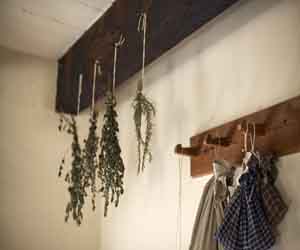

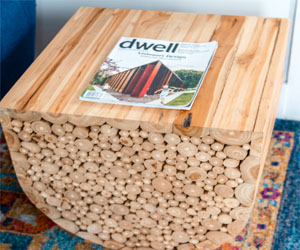
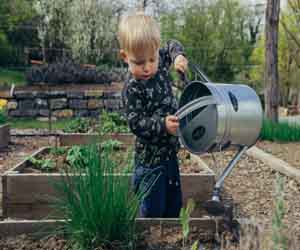
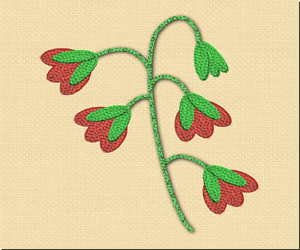
Turning Old Into Gold
 2. Gather Inspiration
2. Gather Inspiration
Before diving into a project, seek inspiration from online platforms, books, or upcycling communities. Ideas are everywhere, and seeing what others have created can fuel your creativity and help you come up with unique, sustainable designs.
3. Choose Quality Over Quantity
When selecting items for upcycling, opt for quality over quantity. Well-made, durable pieces will last longer and provide better raw materials for your projects. This approach ensures your upcycled creations have a longer life as well.
4. Declutter Responsibly
Before tossing old items, consider whether they can be upcycled. Decluttering responsibly by finding new uses for items you no longer need reduces your environmental impact and keeps useful materials out of landfills.
5. DIY Tools And Supplies
Invest in a set of basic DIY tools, like a good-quality glue gun, a sewing machine, and paintbrushes. Having the right tools will make your upcycling projects easier and more enjoyable.
6. Repaint And Refinish
A fresh coat of paint or varnish can breathe new life into many items. Consider repainting furniture or refinishing wooden surfaces to give them a modern, updated look.
7. Mix And Match Materials
Combine different materials to create unique, eclectic pieces. Mixing metals, wood, and fabric, for example, can result in stunning and one-of-a-kind upcycled creations.
Unlocking Beauty With Natural Ingredients
 Healing With Herbs: Herbs have been used for centuries in traditional medicine and beauty practices. Ingredients like chamomile, calendula, and lavender possess anti-inflammatory and healing properties, making them ideal for calming irritated skin and promoting an even complexion.
Healing With Herbs: Herbs have been used for centuries in traditional medicine and beauty practices. Ingredients like chamomile, calendula, and lavender possess anti-inflammatory and healing properties, making them ideal for calming irritated skin and promoting an even complexion.
The Miracle Of Essential Oils: Essential oils are concentrated extracts from plants and are known for their therapeutic properties. Lavender, tea tree, and rosehip oils are excellent choices for skincare, offering benefits such as acne reduction, scar healing, and anti-aging effects.
Fruit Extracts: Fruits like papaya, pineapple, and citrus fruits contain natural enzymes and acids that gently exfoliate the skin, leaving it brighter and more radiant. They are commonly found in natural peels and masks.
The Green Beauty Revolution: The natural beauty movement has given rise to the concept of "green beauty." Green beauty emphasizes the use of clean, natural, and eco-friendly ingredients. Many beauty companies are now formulating products without harmful chemicals, ensuring they are safe for both individuals and the environment.
DIY Beauty: For those who prefer a hands-on approach, DIY beauty using natural ingredients is becoming increasingly popular. Homemade masks, scrubs, and serums can be easily prepared with ingredients from your kitchen or garden, allowing you to tailor them to your specific skincare needs.
Holistic Approach: Natural beauty ingredients are not just about external application; they can also be part of a holistic approach to health and well-being. A balanced diet rich in fruits and vegetables can improve skin and hair health from the inside out.